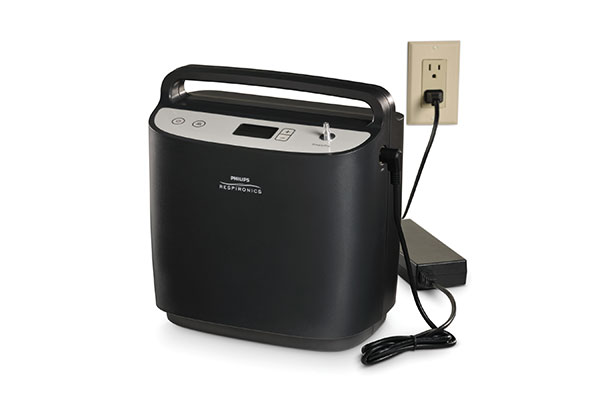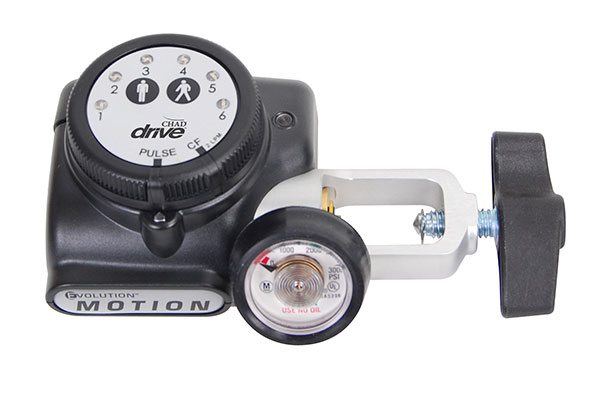Despite lower Medicare allowables, oxygen can still be a profitable business for HME/DME providers. The business will just look a lot different than it used to. Transfill systems are helping providers take delivery costs out of the equation. Portable oxygen concentrators (POCs) have consumer appeal for a new generation of baby boomer customers—and some are paying cash for the machines. New cash sale possibilities offer promise. Finally, looming changes in the overall health care marketplace could impact providers, whether negatively or positively. The broader context of the Affordable Care Act foreshadows new opportunities for HME providers related to oxygen. For example, hospitals will face readmission penalties for COPD in 2014, and the role of HME providers could include clinical education programs to reduce readmissions. Accountable Care Organizations (ACOs) could change how patients receive care, and HME providers should make sure they are involved. Pilot programs are emerging, and smart providers will reach out, be engaged and participate. “Unless you are in the game when these things start executing, you will be on the outside looking in,” says Joe Lewarski, vice president of clinical affairs, Invacare. Many HME providers are missing out by failing to brand themselves as the respiratory home equipment experts in the health care continuum, says Mitchell Yoel, Drive Medical Design and Manufacturing’s executive vice president of business development. “Many providers work incredibly hard to earn and then fill prescriptions for oxygen and then feel powerless against e-commerce and big-box retailers that end up selling profitable cash items to end users who need more than just an oxygen system,” says Yoel. In order to help providers leverage the opportunity, Drive offers revenue-generating value-added programs that provide messaging to referral sources and end users to maximize referrals and increase the lifetime value each end user represents to a provider. Providers often overlook the retail elements of oxygen, which can be a bright spot. New oxygen-related self-pay items are now available, and providers should become more familiar with the options, says Jo Anna Dvorak, respiratory director for AG Industries. “Putting a retail section into your facility will not only increase your cash sales, but also educate and enhance the quality of daily living for oxygen users,” she says. Weekly demonstrations can drive business to the retail section. Providers should mail invitations to oxygen customers inviting them to test equipment, accessories, etc., suggests Dvorak. Lowering acquisition costs and choosing equipment based on overall value, not necessarily lowest price, is another element of a successful oxygen business. “Make sure you get efficient products at a good cost,” says PJ Ruflin, national sales manager of Sunset Healthcare Solutions. “It’s a challenging market, but the patients are there and they have to be served; it’s just a little more difficult to operate in this environment.”
New Approaches to Service
“The cost of goods is just one component of an HME provider’s overall operational cost structure,” says Eli Diacopoulos, vice president and general manager, respiratory care, Philips Respironics. “We think there are strategic approaches to help HME providers navigate the changing reimbursement environment.” He says providers should analyze patient needs and provide different service models based on those needs. In the case of a patient requiring multiple cylinder deliveries each month and located more than 60 minutes, for example, the provider could minimize operational expense by suggesting an alternative solution such as a portable or gas transfill system. While POCs and transfill systems are more costly, the savings may be recouped by reducing cylinder deliveries. Diacopoulos says tools such as Philips’ Right Fit Oxygen Advisor can guide the provider to an appropriate solution. Philips Respironics offers a complete suite of oxygen solutions including the EverFlow stationary concentrator, SimplyGo portable oxygen concentrator, the UltraFill gas transfill system and the new SimplyFlo stationary concentrator, launched at Medtrade in Orlando. Weighing only 8.5 pounds, the new product claims to be “the world’s smallest stationary concentrator.” It is for the active, mobile nocturnal oxygen therapy patient who can take the product along for overnight stays. For the HME provider, it can satisfy the needs of patients who do not accept larger stationary concentrators. There are ways HME providers can educate oxygen patients about possible overlapping diseases and disorders, such as obstructive sleep apnea, says Diacopoulos. Many patients may assume a symptom or condition is related solely to oxygen dependency, but HME providers can supply educational materials on related diseases that could lead a patient to speak with their physician about his or her symptoms. The effort could result in diagnosis of OSA or advanced respiratory insufficiency, which could require use of a CPAP or bi-level device, says Diacopoulos.
POC Buzz Among Consumers and Physicians
Medicare will pay for one stationary element and one portable component for each oxygen user, so customers must choose reimbursement for a transfill system or for a portable oxygen concentrator, but not both. Currently the mix is about 2.5 to 1 in favor of a transfill system, but the mix is likely to change as the durability and reliability of POCs improve, says Lewarski of Invacare. “POCs have a higher up-front cost and maintenance, and they are a little more delicate with greater risk of damage and repair,” says Lewarski. “They are covered by the benefit, but their use is more selective.”
 Sunset Healthcare provides oxygen-related cash sale items such as germicidal cleaners and comfort items related to wrapping cannula tubing around the ears.
Sunset Healthcare provides oxygen-related cash sale items such as germicidal cleaners and comfort items related to wrapping cannula tubing around the ears.Even so, POCs have more “buzz” among end-users and physicians despite the lower cost of ownership for transfill systems. POCs have more consumer appeal, and they are good candidates for cash sales among the growing and affluent baby boomer population, says Lewarski. Boomers are more Internet-active and more likely to do their research before buying a product. He says almost a fourth of POCs are sold for cash. Choosing a POC requires trade-offs, and consumers should understand that there are technical and clinical performance differences among the available choices, says Lewarski. Lighter weight and quieter devices likely produce less oxygen because producing oxygen requires weight, noise and energy consumption. A device that weighs 4 pounds and has a four-hour battery life may not provide enough oxygen for some patients. “Customers tend to migrate toward price and size, but clinically they may find the device they choose doesn’t make enough oxygen to meet their needs,” he says. Internet sellers have limited interaction with the consumer, so buyers should beware. For example, a 1, 2 or 3 setting on one machine would not likely be comparable to similar settings on another machine, and consumers could easily be misled. “HME providers can help steer customers to a device that is most appropriate,” says Lewarski. Invacare has been in the oxygen market for 30 years and provides a range of products including stationary oxygen concentrators, the HomeFill brand transfill system, the SOLO2 transportable oxygen concentrator and the XPO2 portable oxygen concentrator. Invacare emphasizes the HomeFill system as a way for HME/DMEs to eliminate the need to make home oxygen deliveries, and there are more than 250,000 HomeFills used in the United States and also a growing presence in South America and Europe. “We work with providers on solutions that allow them to meet each patient’s clinical needs while pushing down operational costs,” says Lewarski.
.jpg) CAIRE Eclipse 5, an enhanced version of the Eclipse 3, was released to the market this year.
CAIRE Eclipse 5, an enhanced version of the Eclipse 3, was released to the market this year.Race to Best Value
Providers should remember that commodity costs are just one element in a successful oxygen business, and will not necessarily be the factor that makes or breaks their success, says Lewarski. Although reimbursements are shrinking, the product trend won’t be a “race to the bottom,” but rather a “race to best overall value and return on investment,” says Lewarski. “I don’t think people want the cheapest, they want the best value proposition. It’s finding a balance between durability, reliability, and lower cost to serve. Providers need to drive out operational costs and non-value-added costs.” Lewarski says driving out costs are part of the maturing of the “relatively young” HME market. “On the product side we look for innovations that deliver more value,” says Lewarski. “Instead of making a less costly product, we want to make products that provide return on investment, that are smarter, identify problems earlier, drive out costs, and allow fewer deliveries.”
Less Reliance on Cylinders
HME providers can augment their business by looking at both retail and Internet cash sales, agrees Brett Townsend, director of marketing, CAIRE, a Chart Industries company. “Patients who have been burdened with O2 cylinders are increasingly willing to purchase or rent POCs due to their advantages in travel and ambulatory options.” CAIRE offers a complete oxygen product portfolio of portable and stationary concentrators and liquid oxygen systems. The new AirSep FreeStyle 5 with UltraSense sensitivity is a pulse oxygen concentrator with five pulse settings; the company claims it has the highest oxygen output of any available wearable POC. “A missed opportunity for HME providers in the United States is a continued reliance on traditional oxygen cylinder-based business models,” says Townsend. “Aggressively incorporating POCs offers significant advantages in patient compliance while also driving more referrals by allowing differentiation from other HME providers.” HMEs should also increase their oxygen referrals by working with manufacturer sales reps to educate doctors and discharge planners, says Townsend. Providers expanding into the oxygen market should evaluate the financial footing of their manufacturing partners, Townsend advises. Reduced reimbursements could prove challenging for small companies with limited product portfolios. Obtaining parts and service could prove difficult for the HME provider down the road.
 Philips Respironics SimplyFlo stationary concentrator launched at Medtrade in October.
Philips Respironics SimplyFlo stationary concentrator launched at Medtrade in October.Partnering With Manufacturers
Drive Medical Design and Manufacturing’s acquisition of CHAD Therapeutics in 2011 increased the company’s presence in the oxygen sector with a new Respiratory Research, Development and Testing facility in Lehigh Acres, Fla. New oxygen products being made at the Lehigh Acres plant, including a stationary concentrator and home transfill system, are set to be introduced in the first quarter of 2014. Drive offers a suite of both pulsed dose and continuous flow oxygen conservation products, with disposable reservoir, pneumatic, electronic and auto-adjusting technologies. One of Drive’s oxygen conservation technologies, called “auto-adjusting,” is integrated into its OM-900M Evolution Motion electronic conserver, which uses an accelerometer to distinguish patient motion from patient rest. The product increases the dose of oxygen given to a patient during motion, such as when walking up stairs, and reduces it to preset levels during rest. Matching oxygen dose to patient activity level maximizes both clinical efficacy and tank savings. Drive’s business model and focus seek to allow providers to thrive despite pricing constraints of competitive bidding, says Yoel. Drive releases new oxygen technologies every year, and new conserving devices, concentrators and non-delivery transfill units will come to market soon. “Drive has not had to scramble to change the way we release products and manufacture them,” says Yoel. “The innovations and features we put on our products were always necessary to maximize patient care and provider profits, and we continue to focus on that.”
 Drive Medical’s electronic conserver uses an accelerometer to distinguish patient motion from patient rest.
Drive Medical’s electronic conserver uses an accelerometer to distinguish patient motion from patient rest.Working with manufacturers to provide not just product but value is one way providers can maximize their profitability in the oxygen sector, says Yoel. Another important factor is to match the product to the patient, rather than taking a one-size-fits-all approach that leaves patients and referral sources dissatisfied. Finally, providers should look to partner with a manufacturer that provides a broad, deep range of respiratory products. Limiting the number of manufacturers increases efficiencies such as fewer purchase orders, simplified and consolidated freight policies, and fewer credit limits and terms agreements to deal with, adds Yoel.
Maximizing Return on Each Customer
Ruflin of Sunset Healthcare Systems says providers should work hard to get the most business from each patient they have by providing the best product and the highest level of service. “While providing good service and product, they should have a sales-minded attitude,” he says. “Bring up everything that is available the patient, including cash items.” Sunset Healthcare Solutions is a respiratory manufacturer and distributor that supplies various disposables and reusables for oxygen concentrators and tanks, including tubing, cannulas, various connectors, etc. Sunset also provides oxygen-related cash sale items such as germicidal cleaners and comfort items related to wrapping cannula tubing around the ears. Another cash item is the RES010 OxySafe fire-safe cannula valve, being mandated in some states, that looks like a standard oxygen connector but includes a thermal fuse designed to stop the flow of gas in the event downstream oxygen tubing is ignited.
 Sunset Healthcare includes items such as this cylinder backpack in its customized oxygen kits.
Sunset Healthcare includes items such as this cylinder backpack in its customized oxygen kits.Sunset specializes in “kitting” oxygen supplies into customizable products, tailored to the needs of the provider, that can be added to an order, dropped off quickly with an oxygen delivery and include all the needed supplies to set up the oxygen user. Ruflin sees a slower rate of innovation in the oxygen market as an impact of competitive bidding. “With change comes opportunity,” he says. “People will find ways, and manufacturers will continue to improve their machines, just not as fast as if reimbursement was where it used to be. A lot of machines are so expensive they can’t depend on Medicare. You have to provide what makes sense for the customer.” Providers can also help to educate customers on competitive bidding and how they can be heard, says Dvorak of AG Industries. “Reach out into the community through libraries, monthly gatherings of clubs, any group research that can provide exposure,” she suggests. AG Industries is a manufacturer of oxygen products and accessories, including concentrator filters, tubing, carrying bags, cylinder carts and racks, humidifiers, mask cannulas, oxygen starter and repair kits, and accessories. AG customizes concentrator replace/repair kits for home care with any specified make and model. Oxygen starter kits ensure fast oxygen setup and can be customized and labeled with a provider’s logo and telephone number. AG Industries constantly works with customers and exchanges ideas on developing new products. “Although it involves an investment on our part, we have been willing to do it to help home care companies offer a variety of merchandise,” says Dvorak. Literature and mailers can help educate customers and keep them informed about new retail products and about reimbursement changes and limitations on what the provider can bill for. “With all the changes in reimbursement happening so quickly, the average oxygen patient judges it’s the home care provider making these changes, not the insurance provider,” says Dvorak, who suggests providers send a monthly newsletter to oxygen patients.
